Summer savory is an aromatic and culinary herb prized for its spicy, peppery flavour, used both in cooking to enliven dishes and for medicinal properties known since antiquity. It is also easy to grow in garden or vegetable patch in warm regions. Discover in our tutorial how to harvest, preserve and use summer savory.
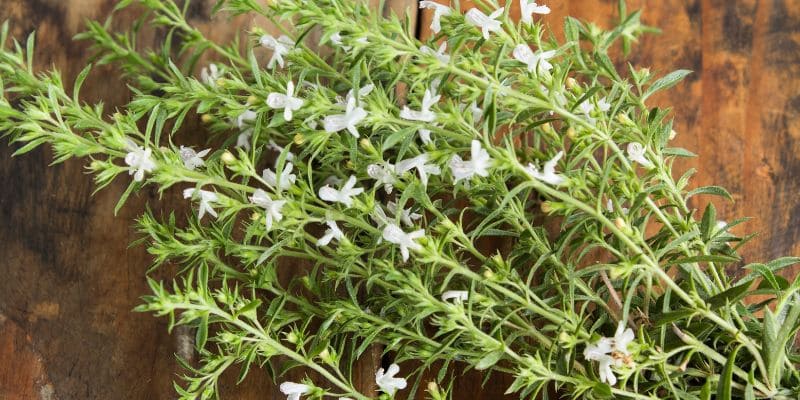
Summer savory in a nutshell
Summer savory, known for its sharp, peppery taste, is an aromatic herb that suits many culinary preparations. It can be used fresh or dried, mainly to season meat dishes, salads, vegetables and sauces. It is even used in liqueur or as an infusion! It has also been cultivated for over 2,000 years for medicinal properties, notably to soothe insect bites and for digestive qualities against bloating and stomach pain.
Which summer savory varieties to choose?
Genus Satureja includes several annual and perennial summer savory varieties. Undemanding, they thrive in full sun, in rich, preferably dry and calcareous soil, making them aromatic herbs perfectly suited to Mediterranean climate. Here are some interesting varieties:
- perennial savory (Satureja montana) : this variety is hardy and easy to grow if given a sunny spot. This Mediterranean plant does not fear dry conditions; on the contrary! It has a milder flavour than annual summer savory. It is also valuable in garden for its evergreen foliage and white melliferous flowering.

- annual savory (Satureja hortensis) : also called "summer savory" or "garden savory", it is famed for a very peppery aroma. Typical herb of the south, it is sown in spring for harvest from June to October. It has the advantage of rapid growth but does not withstand winter cold.
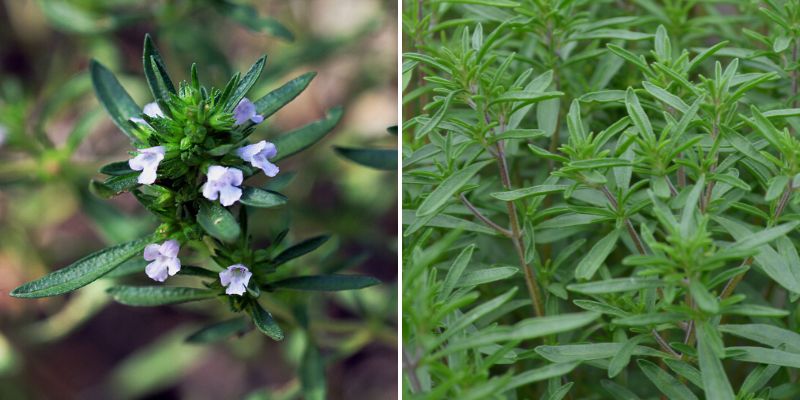
- wild savory (Satureja thymbra): also known as "Cretan savory", native to Mediterranean basin. This variety has a stronger taste and slower growth than other species. It is mainly found in garrigues.

Indian savory (Satureja douglasii Indian Mint) : is a perennial species known as Indian mint, although it belongs to savory family. Like its relatives, it prefers sun and arid conditions. Native to Mexico (not India), it is notable for a creeping, trailing habit and a peppermint flavour (hence the name).
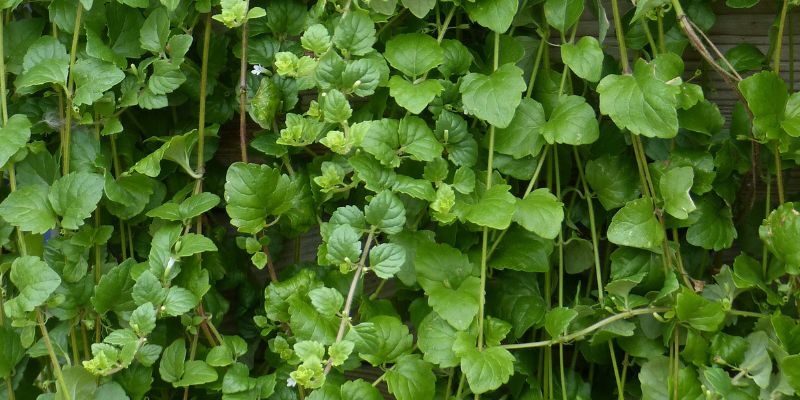
→ Find our full range of summer savory, as young plants or seeds.
When and how to harvest summer savory?
Summer savory is generally harvested from June to September. To enjoy aroma and benefits, pick just before flowering, when plant is most fragrant. Cut stems to about 5 cm from ground, preferably in morning on a fine day, after dew and before sun becomes too hot. That is when summer savory's aromas are most concentrated.
How to preserve summer savory?
Several methods exist to preserve summer savory so flavours can be enjoyed year-round.
By drying
Drying is the most traditional method to preserve summer savory.
- Gather 4 to 6 stems into a bunch and hang in a dry, warm, well-ventilated place, protected from direct light, for about 2 to 3 weeks.
- Once leaves are thoroughly dry and crumble under fingers, remove them from stems and store in an airtight container or kraft bag, away from light and humidity.
- Generally, dried summer savory can be kept for one to two years without loss of quality or flavour if stored correctly.
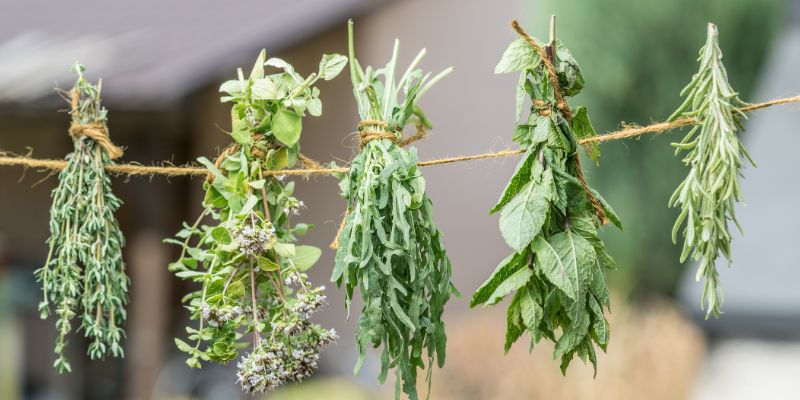
By freezing
Freezing preserves flavour of fresh summer savory. This method suits cooked dishes rather than garnish or salads.
- Remove leaves from stems, then wash gently.
- Dry carefully with kitchen paper or clean cloth.
- Place leaves in freezer bag or airtight container, then into freezer.
- Frozen summer savory can be kept up to 6 months. Beyond that, quality and flavour may start to decline.
Tip: You can also chop summer savory finely and freeze in ice cube trays with a little water to create ready-to-use summer savory cubes.
Fresh summer savory
To keep summer savory fresh, wrap stems in kitchen paper or a cloth slightly moistened. Place all in a perforated plastic bag or a small open container. Then store in vegetable drawer of fridge, where it will keep for about a week.
How to use summer savory?
In cooking
Summer savory is a popular herb in Mediterranean cooking and can be used in several ways to add flavour to dishes. Here are some ideas to use summer savory in kitchen:
- Summer savory is especially appreciated to season meat dishes, notably pork, lamb and chicken. It adds a warm, slightly peppery flavour.
- Add dried summer savory to soups, stews and sauces to boost flavour and aroma.
- It also pairs well with vegetables, such as courgettes, tomatoes, aubergines and legumes (lentils, chickpeas, beans).
- Summer savory can flavour oils such as olive or sunflower oil. Gently heat oil with summer savory and other herbs to create homemade flavoured oil. Another method: place dried summer savory in bottle of oil and let infuse for 2 weeks.
- Summer savory is also used to flavour marinades and dressings, particularly with lemon juice or citrus trees zest.
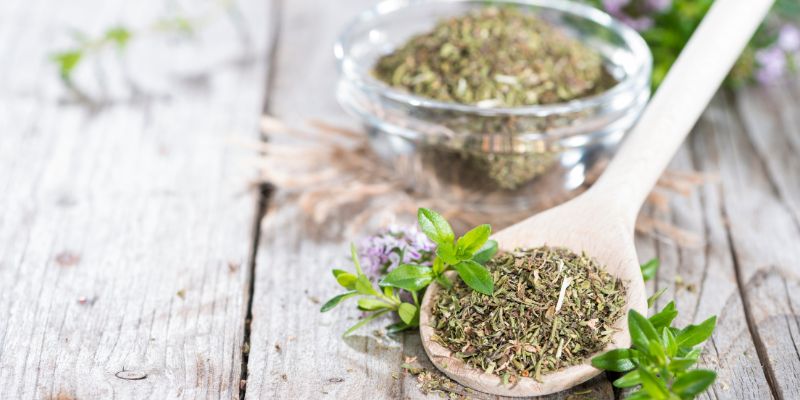
As an infusion
To enjoy digestive benefits of summer savory, prepare an infusion by adding a teaspoon of dried summer savory or a few fresh leaves to a cup of boiling water. Steep for 5 to 10 minutes, then strain and enjoy. This infusion can be taken after meals to aid digestion.
To soothe insect bites
Apply cooled summer savory infusion with cotton to insect bite to help calm itching.
Note: summer savory may rarely cause allergic reactions in some people. Before using summer savory to treat insect bites, carry out a skin test by applying a small amount to skin and wait 24 hours to check for any reaction.
Further reading
- For full details, browse our complete guide on summer savory: sowing, growing and harvest.
- Discover our wide range of summer savory, offered as young plants or seeds.































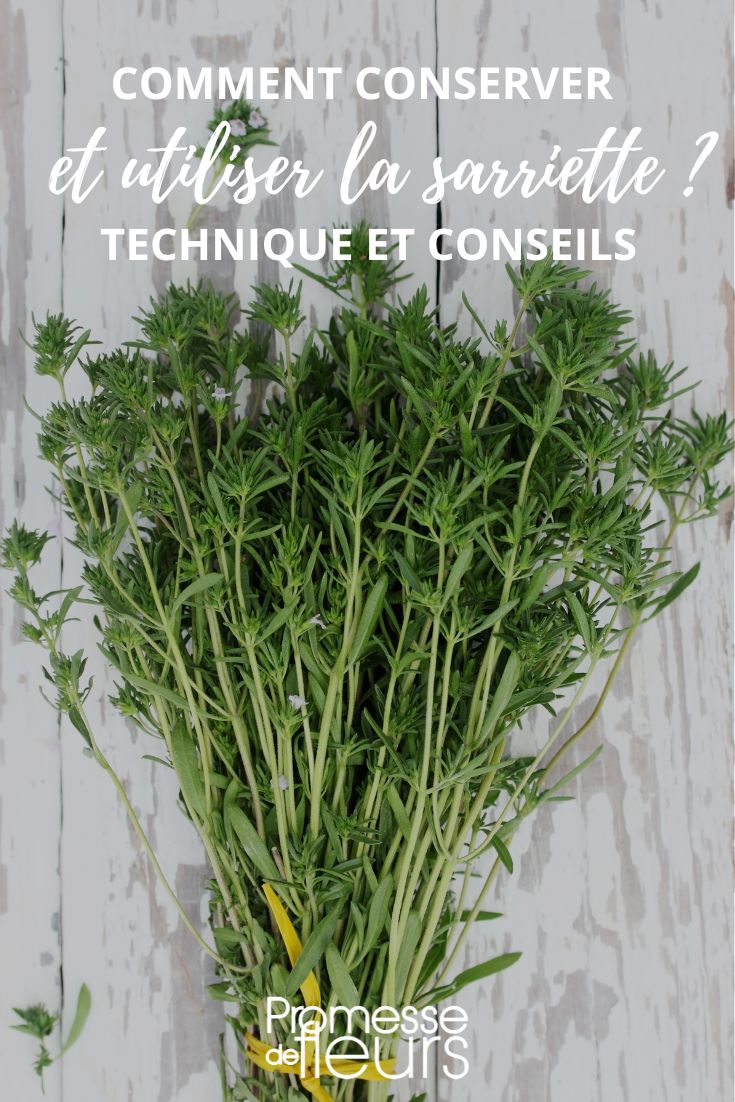
Comments